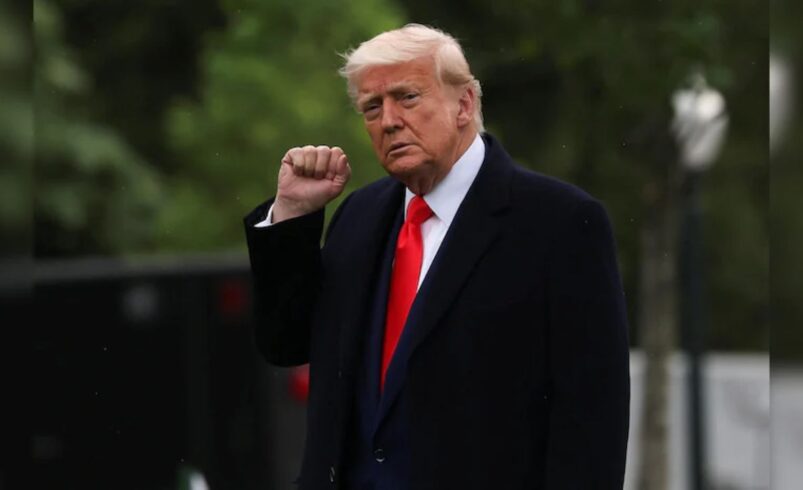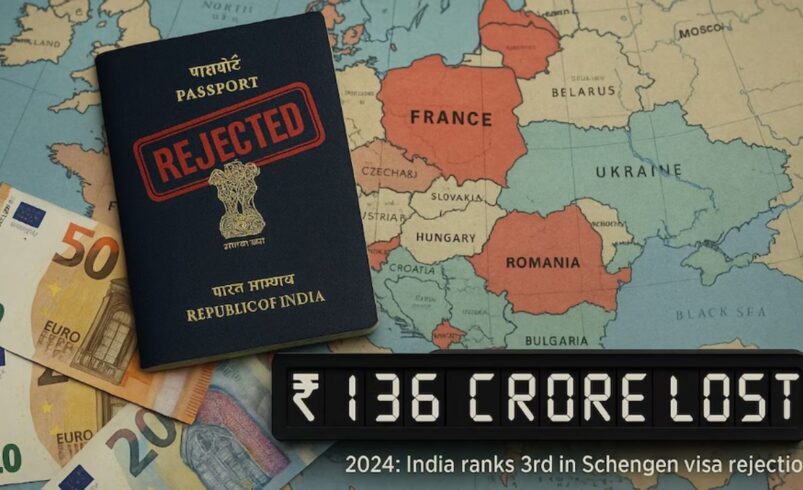In a striking policy declaration, U.S. President Donald Trump has warned Apple Inc. of a 25% tariff on iPhones manufactured outside of the United States and sold within the country. Announced via Truth Social, Trump reiterated that he had already informed Apple CEO Tim Cook that all iPhones for the U.S. market must be made domestically. This move is part of Trump’s broader push for economic nationalism and aims to reduce American dependence on global manufacturing hubs like China and India. As the U.S. continues discussions with India for a bilateral trade agreement, Trump’s ultimatum throws a curveball into Apple’s India strategy, which has been developing rapidly over the past few years.
India in the Crossfire: Apple’s Global Shift at Stake
India has been central to Apple’s efforts to shift production out of China and mitigate geopolitical risks. With two major iPhone assembly plants underway by Tata Electronics and Foxconn, Apple’s vision to make India a manufacturing powerhouse is gaining ground. The U.S. has so far offered zero tariffs on Indian iPhone exports, in contrast to the 20% imposed on Chinese imports. Apple’s current production in India is valued at $22 billion and is expected to reach $25-26 billion by FY26. However, Trump’s latest policy twist threatens to derail this momentum, putting India in a challenging spot and potentially forcing Apple to revise its long-term production goals.
Three Options for Apple: Absorb, Adjust or Appeal
Industry experts have outlined three likely paths Apple could take in response to the proposed 25% tariff. First, the company could pass the added cost on to U.S. consumers, which would make iPhones more expensive and potentially impact sales. Second, Apple might lobby for government subsidies to offset the increased costs—much like the support given to EV manufacturers. Third, the tariff could act as a protectionist measure to incentivize domestic iPhone production, offering an advantage to vendors willing to manufacture in the U.S. None of these options are simple or immediate, and each involves significant shifts in policy, logistics, or pricing strategy.
Manufacturing in the U.S.: A Costly, Complex Transition
Though Trump’s call to “make iPhones in America” echoes patriotic sentiment, experts caution that a full-scale shift of Apple’s manufacturing base to the U.S. is neither cost-effective nor logistically feasible in the near term. Asia, particularly China and India, dominates Apple’s supply chain with established infrastructure, skilled labor, and supplier ecosystems. According to analysts like Tarun Pathak of Counterpoint Research, moving operations to the U.S. would require substantial subsidies to overcome cost disadvantages, and even then, the transition could take 2–3 years. Real-world constraints like land acquisition, factory setup, and component supply pose formidable challenges.
What Lies Ahead: Global Trade, Local Politics, and Apple’s Gamble
The latest development underscores how global corporations like Apple must constantly adapt to shifting political landscapes. With the U.S. presidential elections approaching, Trump’s aggressive stance on domestic manufacturing may find support among his voter base, but it places Apple in a dilemma. Should the company double down on its investments in India or begin a slow pivot back to American soil? The next few months will be critical, especially as trade negotiations between India and the U.S. unfold. One thing is certain—Apple will need to navigate a fine balance between economic logic, political pressure, and customer satisfaction in its largest market.
Get the latest in business, markets, startups, and policy—visit businessnewsindia.in for in-depth updates and follow us on Instagram @businessnewsindia.in for daily bites of what matters most.
Source : business-standard.com









